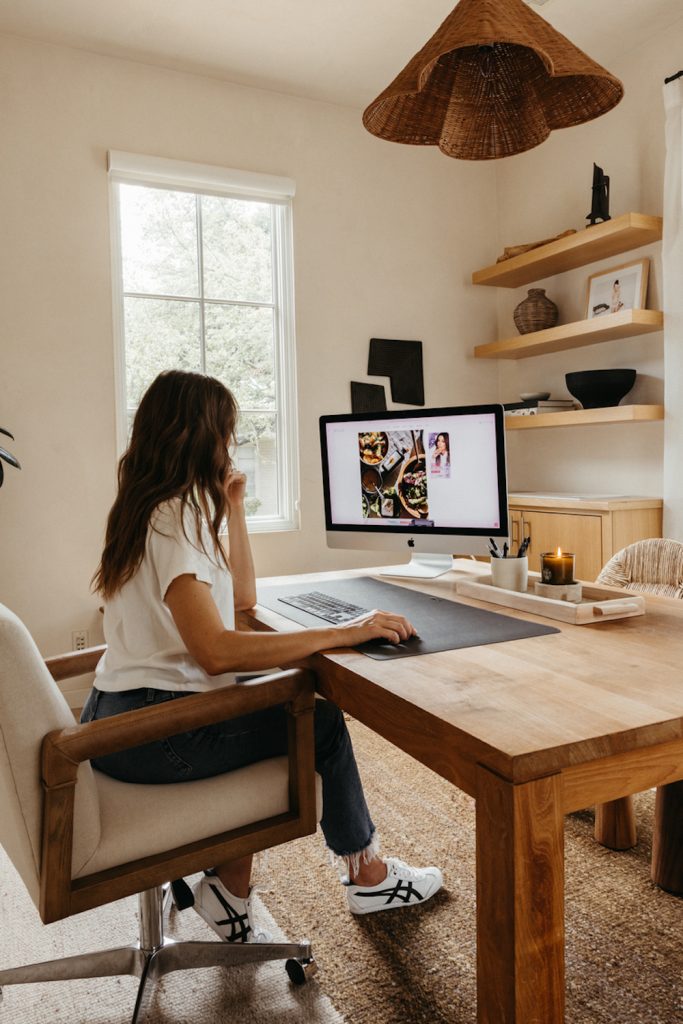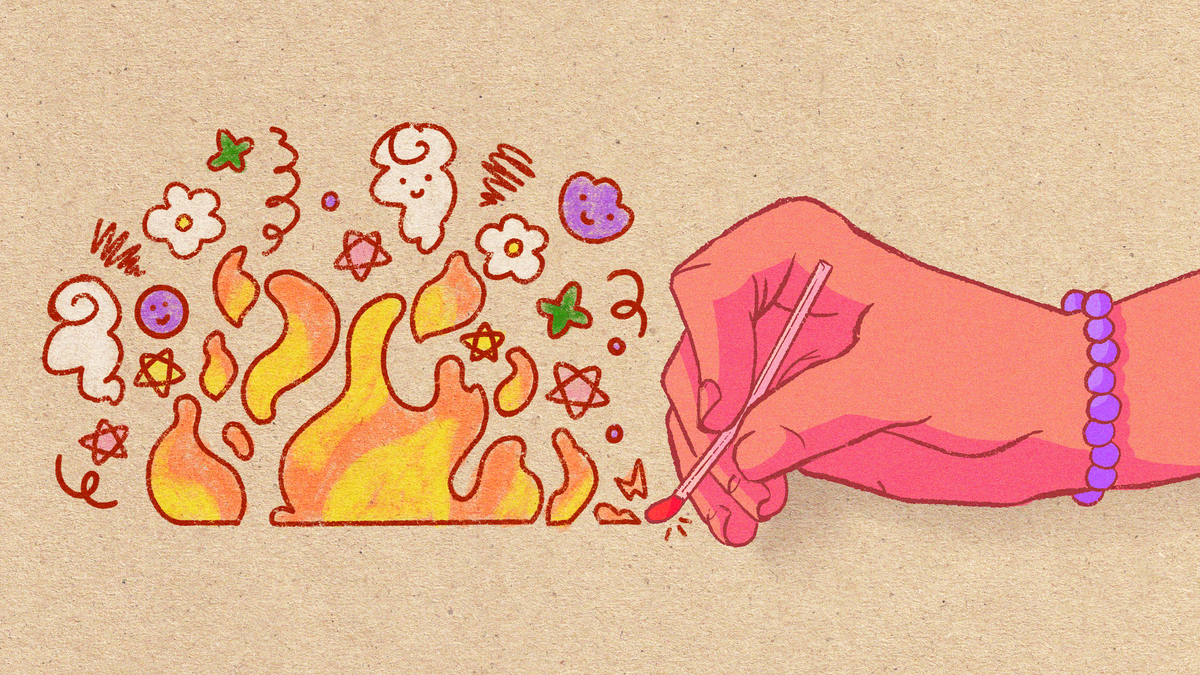I Used to Be a Chronic Procrastinator—These Productivity Tips Help Me Get It All Done
Focus and flow. The post I Used to Be a Chronic Procrastinator—These Productivity Tips Help Me Get It All Done appeared first on Camille Styles.

It's grown into an age-old question: how to be more productive. I've tried all the tricks, applied all the hacks, and yes—read all the self-help books. But still, something didn't click when it came to getting things done. Each day, I'd sit down to my desk hoping to reach that elusive flow state. I wanted every minute of every hour to align perfectly at the intersection of feeling my best while getting my best work done. (Don't worry, I'm working on taming my unrealistic expectations as well.)
Of course, I'm not alone in wanting to make the most of my time. With so much to do and only so many hours to do it all in, we all feel the pressure to be effective and efficient. If you're ready to tune out distractions, silence your inner critic, and focus on what's important, keep reading. Ahead, I'm sharing tips to help you to tune out the noise and learn how to be more productive. Once and for all.
Featured image by Michelle Nash.
[table_of_contents title="In this article"]
 Image by Teal Thomsen
Image by Teal Thomsen
What is productivity?
The concept of productivity is primarily used in workplace settings. In the context of employment, productivity refers to our output as it relates to our role. As a writer, I often use productivity to describe how many articles I completed on a given day. But for someone who works in sales, it could measure cold call outreach. The point is, productivity doesn't look the same for everyone. And oftentimes, it can be difficult to quantify because, in reality, the results aren't as easily measurable as I just laid out.
I'll use a personal example. One of the reasons I struggle with feeling productive is because writing isn't as simple as sitting down at your computer and typing up whatever thought pops into your head. Instead, it's the amalgamation of research, interviews, outlining, and editing (i.e., lots and lots of emails). Like many things, it's a process, and because the final result involves so much hidden work, it can be easy to think we're not being productive. The immediate output doesn't match the input.
What Productivity Is Not
It can be helpful to remember that, although closely related, productivity and time management are not synonymous. While our time management can impact our productivity, it instead refers to the ability to effectively structure a certain length of time. (For example, the workday.)
I saw this nuanced difference described best in a 2022 article published on FutureLearn: "Time management is a range of skills and tools that promote the effective use of a person’s time. Productivity is about the results that are achieved within a certain length of time." When it comes to productivity, we have our sights set on the outcome.
But it bears repeating: time management can directly impact our productivity. Ahead, I'm sharing my top tips for using your time best in pursuit of your goals. Remember: none of us are perfect, and I'm writing this as a reminder for myself of the skills and strategies that help me hone in my focus and experience flow.
 Image by Michelle Nash
Image by Michelle Nash
How to Be More Productive: 8 Tips to Get on Track
1. Ditch the Perfectionism
Personally, this has been my biggest obstacle in teaching myself how to be more productive. If there's anything I've learned as a recovering perfectionist (who relapses every now and then), it's that perfectionism is the enemy of innovation, creativity, and productivity. When our expectations of ourselves don't align with reality, nothing matches up. It keeps us in a pattern of hesitation—we worry that what we're doing isn't good enough, and we second-guess ourselves before even trying.
If you're tired of the back-and-forth between yourself and your inner critic, it's time to ditch the perfectionism. Try repeating this affirmation when you feel perfectionism creeping in: I am not defined by what I achieve. I am already and always enough.
2. Release Your Fear of Failure
It's time to acknowledge and accept that our fear of failure is keeping us stuck. Closely related to perfectionism, when we operate from a space of never allowing ourselves to fail, we build and perpetuate an inner dialogue of anxiety. What if doesn't work out? Are any of my efforts going to be worth it in the end? Countless questions swirl in our minds, making it more difficult to act and therefore, be productive.
Instead, root yourself in the present moment. Rather than thinking three steps ahead, ground yourself with the reminder that you can only control what's right here, right now.
3. Determine What's Important
PSA: you won't get everything done every single day. More often than not, crossing off every to-do is impossible—and ineffective. If you're wondering how to be more productive, I consider The ONE Thing: The Surprisingly Simple Truth Behind Extraordinary Results required reading. In it, author Gary Keller outlines the lies that keep us from achieving success. The primary one we tell ourselves? We have to do everything. Instead, Keller encourages a less-is-more approach.
Applying this to your daily productivity, it can be tempting to start your day with an overblown estimation of what you can do with your waking hours. But all this does is distract us with meaningless tasks. By 5 p.m., you're left feeling unproductive because the to-do's that matter are still left on your list.
To combat this, I like to identify the three things that have to get done. By directing your efforts toward those important tasks, even if you achieve nothing else that day, you know you're still moving the needle forward.
4. Do the Hardest Thing First
Of those three tasks you identified as being the most important, prioritize the most challenging, perhaps cumbersome task first. As humans, we love (and live for!) immediate gratification. Because of that, we often opt for the path of least resistance. And because we all love the hit of dopamine that comes with crossing something off our to-do list, it would make sense that we prefer to do the easiest asks first.
But motivation compounds on itself, and when we get the hardest thing done first, our momentum builds. From there, you can focus on your quick wins and feel confident knowing: it’s all downhill from here.
I am not defined by what I achieve. I am already and always enough.
5. Take Breaks
I’ll say that again: Take. A. Break. We’ve all been trapped by the belief that if we just push a little longer, we can get more done. Whenever the little voice pops into my head trying to convince me that breaks are counterproductive, I apply that reasoning to going on a hike. You get up the mountain much faster if you take shorter, more frequent breaks to sip water and catch your breath. Newsflash: that reasoning can be used during your workday as well. In fact, it’s been found that taking regular breaks throughout the day is a solid strategy for reducing stress and increasing performance.
But… you have to be strategic and intentional with your breaks. This is not the time to mindlessly scroll your phone. Instead, leave your device at your desk and step outside for a walk to soak up the sunlight and fresh air. Some other ideas for taking a break during your workday:
Roll out your yoga mat and stretch, practice breathwork, or do a quick meditation. Pull out your book and read for 10 minutes. Make a warm, comforting beverage and sip mindfully. Play with your dog or pet your cat. Do a quick tidy-up. Take a power nap.Anything goes, so long as it helps you come back to your work feeling refreshed, rejuvenated, and reinsured.
6. Delegate
Again, you don’t have to do it all. Nor should you! If you’re part of a larger team, determine which of your daily tasks or projects can be handled by another team member. I know it can be harder than it sounds, but if you have a hard time taking something off your plate, remember: doing so can benefit not only your organization as a whole, but make it easier for you to do your best work by prioritizing what matters to you.
7. Get Rid of Distractions
You may think of procrastination as a personality trait, but the truth is that all of us do it! Procrastination is our *very human* way of avoiding difficulty or an experience that pains us in some way. While it’s impossible to feel focused and to be on-task at all times, we have the power to limit our sources of distraction.
The most common and tempting culprit? Our phones. Turn off notifications and delete certain apps from your home screen if necessary. Place it in a separate room. Anything you have to do to separate yourself from the productivity-sucking device, do it. Some other strategies for limiting distractions can include:
As a part of your morning routine, do a quick tidy before starting your workday. If chores make it hard to focus, get them out of the way first. Turn your phone onto airplane mode. This will keep any notifications from popping up on your screen and diverting your flow. Take a minimalist approach. I feel calmest and most centered when I’m working from a space adorned only with a few intentional objects I love. I keep my desk clear with the exception of a candle, mug, and water bottle. Work with a timed method. Inspired by the Pomodoro Technique, I like to set timers for 5-10 minutes. For whatever the duration of time, I can only focus on a single task. I can’t check my phone, I can’t monitor my email. You’ll be shocked by how much you can get done in just a little time without any distractions.8. Establish Boundaries
Last but not least: boundaries. We all get pulled in a million different directions every single day. Coworkers pop up in our Slack with an unexpected fire to put out. Our kids get sick and have to stay home for the day. Life admin tasks weigh down on us throughout the day. While some of these things have to be addressed, it’s important to remember that our actions teach others how to value our time. If you’re sending emails late into the evening, your team will think they can reach you at any hour of the day. When you say yes to everything, you set the expectation that you’re the one to drop last-minute tasks onto.
Instead, clearly communicate to others expected project timelines and don’t be afraid to say when you think a deadline isn’t realistic. Check your email and respond to messages at consistent times during the day (the start, middle, and end of your workday is a common approach).
 Image by Michelle Nash
Image by Michelle Nash
The Takeaway
Because many of these tips are closely interwoven, they need to be applied in conjunction with one another for you to structure a productive, meaningful day. No one is perfect and no one can do everything—so set strong boundaries that respect your time. Limit distractions to free up space in your schedule for quick, consistent breaks that help you come back feeling refreshed. Determine what’s important and do that first, so that even if you don’t get anything else done, it doesn’t ultimately impact how productive you were.
And remember, no one is perfect our productivity fluctuates from day to day. We may start the morning with a different energy than we did yesterday, or we might find ourselves more motivated than last week. While it’s important to do your best, we can only control so much. Your worth and your work are not the same things, and it’s time we release the belief that they ever were.

 ShanonG
ShanonG 
































